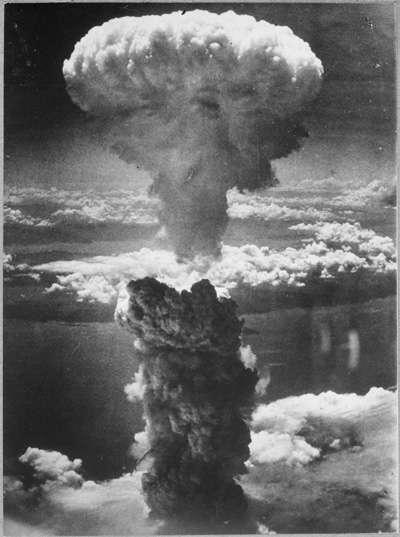Encyclopedia Dubuque
"Encyclopedia Dubuque is the online authority for all things Dubuque, written by the people who know the city best.”
Marshall Cohen—researcher and producer, CNN
Affiliated with the Local History Network of the State Historical Society of Iowa, and the Iowa Museum Association.
ATOMIC RESEARCH: Difference between revisions
Lyonbriggs (talk | contribs) (New page: center|thumb|150px|Atomic ResearchATOMIC RESEARCH. In May 1953 Arthur Whalen, later a principal in the DUBUQUE COMMUNITY SCHOOL DISTRICT at Lincoln, Sagevi...) |
Lyonbriggs (talk | contribs) No edit summary |
||
| Line 1: | Line 1: | ||
[[Image:AtomicResearch.jpg| | [[Image:AtomicResearch.jpg|left|thumb|150px|Atomic Research]]ATOMIC RESEARCH. In May 1953 Arthur Whalen, later a principal in the [[DUBUQUE COMMUNITY SCHOOL DISTRICT]] at Lincoln, Sageville, and Keller schools, was one of the first five soldiers to enter Ground Zero, site of the first test firing of an atomic bomb in the Nevada desert west of Las Vegas. | ||
The soldiers entered the area of the blast minutes after the explosion of a 20 kiloton atomic bomb. Carefully monitoring radioactivity in the area, the soldiers marked areas too "hot" with tape. Soldiers following them were instructed to move forward to the right of the markings. | The soldiers entered the area of the blast minutes after the explosion of a 20 kiloton atomic bomb. Carefully monitoring radioactivity in the area, the soldiers marked areas too "hot" with tape. Soldiers following them were instructed to move forward to the right of the markings. | ||
Revision as of 09:13, 14 June 2008
ATOMIC RESEARCH. In May 1953 Arthur Whalen, later a principal in the DUBUQUE COMMUNITY SCHOOL DISTRICT at Lincoln, Sageville, and Keller schools, was one of the first five soldiers to enter Ground Zero, site of the first test firing of an atomic bomb in the Nevada desert west of Las Vegas.
The soldiers entered the area of the blast minutes after the explosion of a 20 kiloton atomic bomb. Carefully monitoring radioactivity in the area, the soldiers marked areas too "hot" with tape. Soldiers following them were instructed to move forward to the right of the markings.


